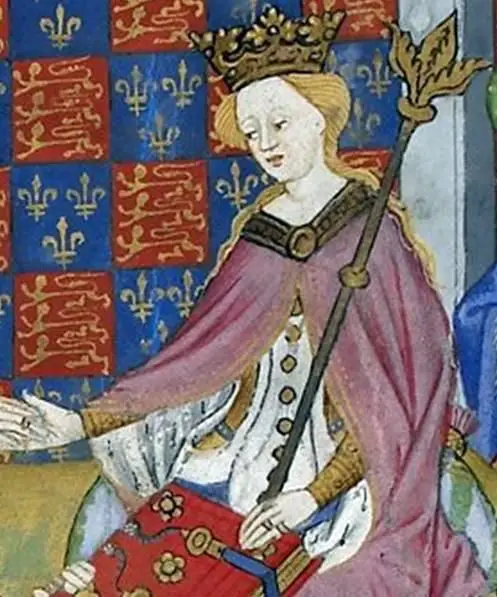Before I share a link to some primary source accounts of the 1572 St Bartholomew's Day massacre, here is an excerpt from my book On This Day in Tudor History about the massacre:
On this day in 1572, the St Bartholomew's Day Massacre took place. An estimated 3,000 French Protestants (Huguenots) were massacred in Paris, and a further estimated 7,000 in the provinces. According to tradition, Catherine de' Medici persuaded her son, King Charles IX of France, to order the assassination of key Huguenot leaders who had gathered in Paris for the wedding of their leader, Henry of Navarre, to Margaret of Valois, the King's sister.
The wedding had taken place six days earlier, on 18th August, but the Huguenots were still in the city to discuss grievances regarding the 1570 Peace of Saint-Germain-en-Laye, the peace treaty which had ended the third French War of Religion. On the 22nd August, Admiral Gaspard de Coligny, the leader of the Huguenots, was shot and seriously wounded. It is not known who ordered the attempt on his life, but there are three main suspects: the Guises (leaders of the Catholic party), the Duke of Alba (the man governing the Netherlands) and Catherine de’ Medici. Whatever the truth behind the assassination attempt, the shooting triggered trouble. The Huguenots were angry and demanded an investigation into the shooting, which the King agreed to do, but on 23rd August the King and his mother agreed that the Huguenots were a threat that needed dealing with, and made the decision to order the murders of the Huguenot leaders.
Just before dawn on 24th August 1572, Admiral Coligny was stabbed to death by Besme, one of the Duke of Guise’s men, and thrown out of his bedroom window. This killing sparked off city-wide violence with Parisians turning on Huguenot men, women and children, killing them and throwing their bodies into the River Seine. The violence in Paris lasted three days, but news of the Paris trouble sparked off massacres in Toulouse, Bordeaux, Lyon, Bourges, Rouen, Orléans, Meaux, Angers, La Charité, Saumur, Gaillac and Troyes, and the violence lasted until well into October in some cases.
We do not know exactly how many people died in these horrific massacres. The Huguenot Maximilien de Béthune, duc de Sully, who escaped the massacre in Paris by carrying a “Book of Hours” under his arm, reported that 70,000 Huguenots were murdered, whereas modern historians, Ranke and Henri Martin, estimate the number of victims in Paris at 2000. Philip Benedict, in his article “The Saint Bartholomew’s Massacres in the Provinces”, puts the death toll at 2,000 in Paris and 3,000 in the provinces, compared to a total of 30,000 quoted by historians F. Fernández-Armesto and D. Wilson in Reformation: Christianity and the World 1500 – 2000. Whatever the true figure, it was an horrific event.
You can read primary source accounts, including an eye-witness account by clicking here.
Primary Sources
Members can access the primary sources page for the St Bartholomew's Day massacre - click here - which includes:
- Eye witness account, written by historian Jacques Auguste de Thou
- John Foxe's account from Actes and Monuments
- Letter written by Marguerite de Valois




my degree in college is the middle ages and renaissance could you please add me to this society thanks i love history!!
We’d love to have you as a member, Katie. See https://www.tudorsociety.com/ for details on joining the society.
Nancy Goldstone who has written about Margot and her husband and Catherine de Medici in a duel biography states that the Queen Mother tried to stop the massacre but it was too late. Catherine is blamed for it. Well, of course she was, she was a foreign Queen, female, ambitious, already had a ruthless reputation, of course she gave the orders. The fact that she actually tried to prevent violence through this marriage didn’t matter to the chronicles, it was all in order to kill all of the Protestants in Paris. It is more likely that seeing them as a dangerous threat the murder was staged as a signal and the notorious de Guise clan blamed. Revenge followed and then the orders were issued. It is also more probable that once the blood of the mob was up that there was no stopping them, that people ran riot and everything got out of control. Whatever the numbers, whoever gave the terrible orders, which account is true, this was a terrible blight on Christian history and horrific massacre of human life. It spread outwards and hit many cities. It was as if an insanity of evil had taken over France. I don’t know if Catherine de Medici was responsible or whether she realised things were getting out of control and tried to intervene, but history defamed her because of this massacre. She is blamed for the deaths of her sons in order to fulfil prophecy as well. In La Reine Margot both Catherine and Marguerite, her daughter, wife of Henry of Navarre are made out as cunning, evil, scheming women who will stop at nothing to get their own way and Margot is out of control sexually. It is meant as a metaphor for cruelty, the massacre is central to the film and the women are it’s authors. It is ironic that Henry of Navarre, the Protestant Prince at whose wedding this terrible event took place, but who was forced to convert to save his life, later came to the throne of France as Henry iv. It is also ironic that he voluntarily made a formal conversation, issued the Edict of Nantes which protected French Protestants and made freedom of worship law for everyone. He too, however, made a tragic and violent end when he was murdered on his way to Mass, by one of his own people.